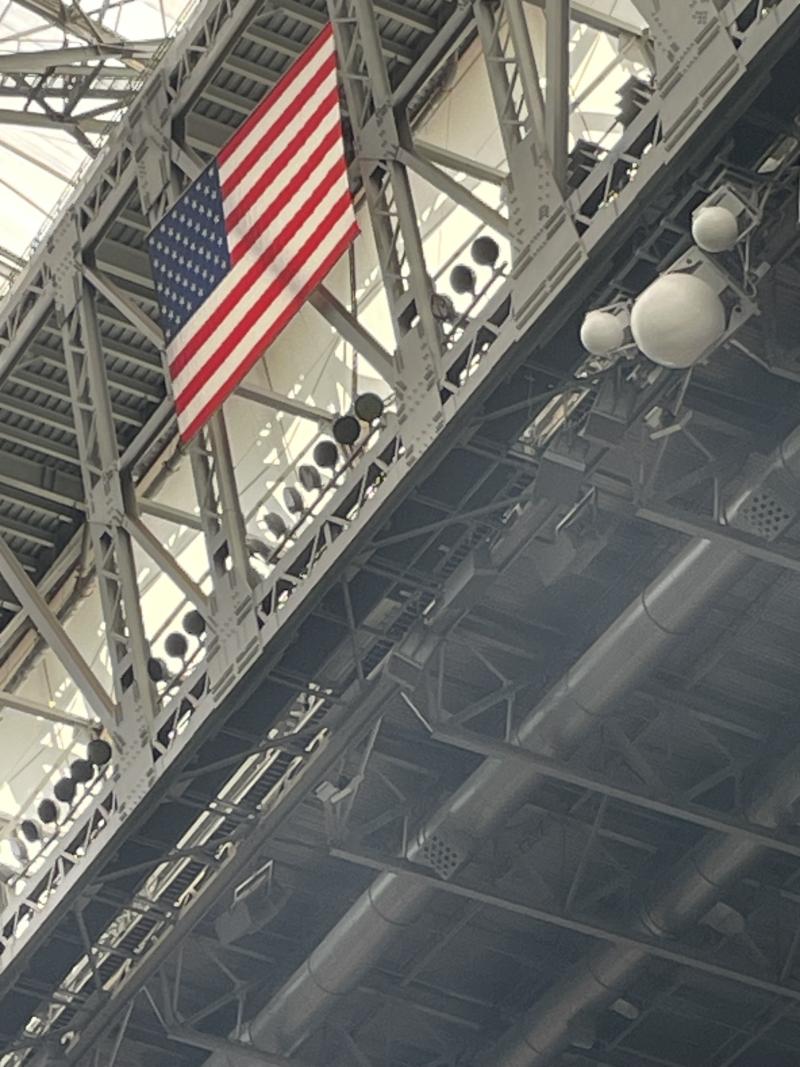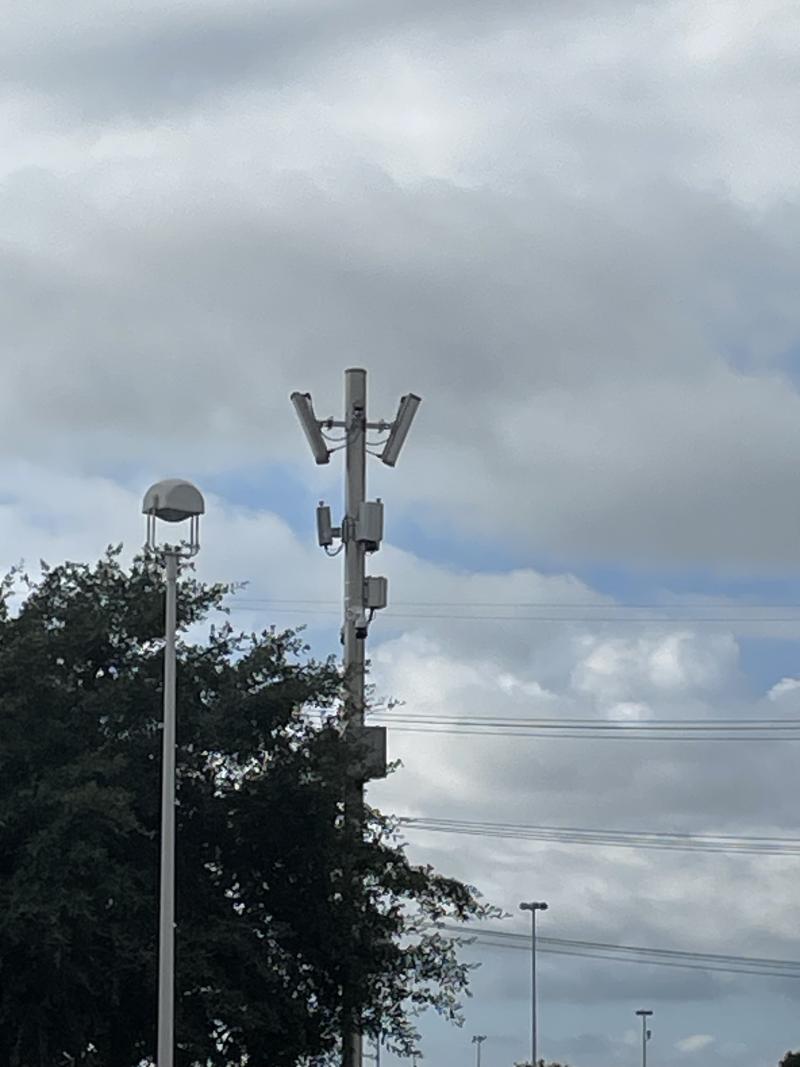Houston’s NRG Stadium can accommodate 72,000 guests and has been approaching capacity during recent Texans games, with more than 60,000 fans in attendance. Beyoncé and Taylor Swift have also sold out the venue this year, putting heavy demands on the stadium’s wireless networks.
New to the stadium this year is Verizon’s C-Band spectrum, which the carrier has added to its distributed antenna system (DAS) at NRG. Giant spherical MatSing antennas provide 12 sectors of C-Band coverage, complementing the system’s mmWave and LTE spectrum. Samsung is Verizon’s radio vendor for the DAS, and CommScope supplies the fiber and headend unit.

MatSing antennas at NRG Stadium
Guillermo Salinas, Verizon’s network system performance director for Houston, carries an iPhone and an Android smartphone as he enters NRG stadium. He is constantly monitoring the user experience on the network, but he knows the speeds he sees as he walks the venue on a Friday are not indicative of what fans will experience on Sunday. Verizon has people on the ground during every event, while a team of engineers monitors the network from a central office. The engineers can dynamically allocate capacity as needed, but Salinas said that is not the goal.
“We are always hoping not to touch the network during a game,” Salinas said. Instead, he and his team analyze network data from each game in order to make adjustments for the next one. For example, if recent model iPhones tend to be overrepresented near center field, the carrier can allocate more C-Band capacity there.
Meanwhile, coaches and quarterbacks communicate on a private LTE network managed by Verizon, which uses 4 Nokia radio units and CBRS spectrum. The NFL has deployed private wireless networks in all 30 of its stadiums. Salinas said all the private networks currently use CBRS spectrum under General Authorized Access, adding that the carrier could look at acquiring Priority Access Licenses if needed in any of the NFL cities.
Jeff Schmitz, VP and chief information officer for the Houston Texans, said seasoned football fans will notice the coaches are no longer followed by the assistants who carried the cables that previously connected them to one another and to quarterbacks.
Another common site at NFL games is long lines to enter the stadium, and Schmitz said Verizon is helping to change that as well. The carrier has added small cells atop light poles surrounding the venue. “If fans can pull up their mobile ticket it just helps with everybody getting into the stadium,” Schmitz said.

Small cell outside NRG Stadium
The Verizon DAS currently supports AT&T and T-Mobile, Schmitz said, but he noted that T-Mobile has the option of moving back to another NRG stadium DAS previously installed by Sprint. He said that of the 57,000 – 63,000 fans inside NRG during a well-attended Texans’ game, 12,000 – 15,000 will connect to the DAS. The rest will use the NRG Wi-Fi network, which was built by Extreme Networks and is currently being upgraded to Wi-Fi 6E. About 40% of the Wi-Fi network is dedicated to Verizon offload, and Schmitz said that represents up to 5 terabytes of data during a typical game.
NRG’s wireless networks are likely to handle record traffic in 2026, as the stadium hosts several FIFA World Cup games. Salinas is planning to overlay another 12 sectors of C-Band, and said his team is constantly analyzing all sectors of the DAS to see where more bandwidth or antennas may be needed. The DAS already has 1,000 antennas, he said, some of which are buried beneath the concrete. “The more antennas we can add, the cleaner the sector,” he explained.
In Houston, Verizon faces a special set of challenges since the city is prone to hurricanes. The DAS headend has two fiber routes connecting it to Verizon’s main switch in northwest Houston, and it can be powered by a backup generator. In 2017, just a few months after hosting the Superbowl, NRG Stadium was used as a shelter for those displaced by Hurricane Harvey.